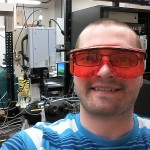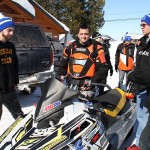
The ME-EM Order of the Engineer, Senior Awards Banquet and Capstone Design Day was April 22, 2013 at the Rozsa Center Lobby.
The keynote speaker for the banquet was Ms. Lee Ann Rouse, President and CEO Omni Tech International Ltd. Lee earned a bachelor’s degree in Mechanical Engineering from Michigan Tech in 1987.




